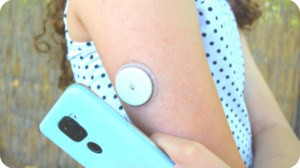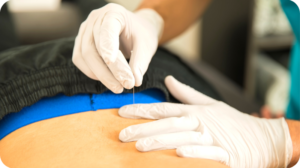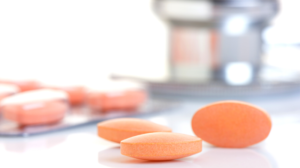Your gut is talking to the rest of your body all the time. A healthy gut with a full complement of beneficial bacteria sends messages to other organs—including the brain—prompting nerve and hormone responses. This communication can affect mood and mental health, immune response, and other general health factors. In a very real sense, where gut health goes, overall health is sure to follow.

So, how to keep your gut in tip-top shape?
That begins with what you take in. A healthy lifestyle that limits alcohol, high fats, refined and processed foods, and stress, is a great start. But it’s wise to ensure a good mix of prebiotics and probiotics. Perhaps more than any other factor, these are crucial to your gut health.
Fibers and Bacteria
The “pre” in prebiotics means that this is the first step in developing healthy gut bacteria. Prebiotics are special fibers found in fruits and vegetables. The fibers foster the growth of diverse gut bacteria. Here is a short list of prebiotic-rich foods to include in your weekly meal plan:
- Apples
- Garlic
- Onions
- Asparagus
- Bananas
- Whole oats
- Chickpeas
- Artichokes
- Kidney beans
- Dark chocolate
Probiotics are the actual beneficial microorganisms that flourish in a healthy gut. It’s wise to include fermented foods and those made from live cultures to boost your probiotics. These include:
- Kimchi and sauerkraut
- Yogurt
- Dill pickles
- Organic gouda
- Miso soup
Although prebiotics are usually only consumed in your diet, probiotics are often supplemented with capsules. This can be useful for anyone struggling with gastrointestinal issues, or taking a course of antibiotics. (Always consult your physician before taking any supplement.)
When it comes to probiotic supplements, more is usually better. Here are specific guidelines for getting the most for your money.
- Choose high CFUs. Probiotic doses are measured in colony forming units (CFUs). Never buy a supplement of less than 1 billion CFUs; 10 billion is a good baseline for adults, while children should start with 5 billion.
- Stress the strains. A diverse mix of bacteria is best. The most common you’ll see are Bifidobacterium, Lactobacillus, and Saccharomyces. Those are the genera, and are usually followed by another Latin term that is the species. The more the merrier, but see the next point.
- Let the label be your guide. Although you may have to spend a little more, buy a reputable brand of probiotic supplement (the store should keep them refrigerated). Look for indications on the label that the product has been tested through a third-party lab such as LabDoor. Reputable products will also usually label the bottle with the conditions that particular mix of strains is best at treating. For instance, inflammatory bowel conditions, immune system (ideal for anyone taking antibiotics), or heart health. The label may also indicate whether the product is meant for men or women, young or old. And, of course, the CFUs will be prominently listed.
Follow the storage directions on the label. Probiotics usually require refrigeration below 46°F. They should not be taken after their expiration date. Most products should be taken on an empty stomach, ideally no closer than four hours to a dose of antibiotics. Probiotic side effects are rare, but include bloating, gas, and abdominal pain, and more rarely, allergy symptoms. Stop taking the supplement if the side effects worsen.
Consuming a healthy mix of pre- and probiotics is not difficult. Food sources are some of the more delicious edibles, and supplements, while expensive, are rarely a hassle. Your gut—and the rest of body—will thank you.
Share some love if you like this post!





